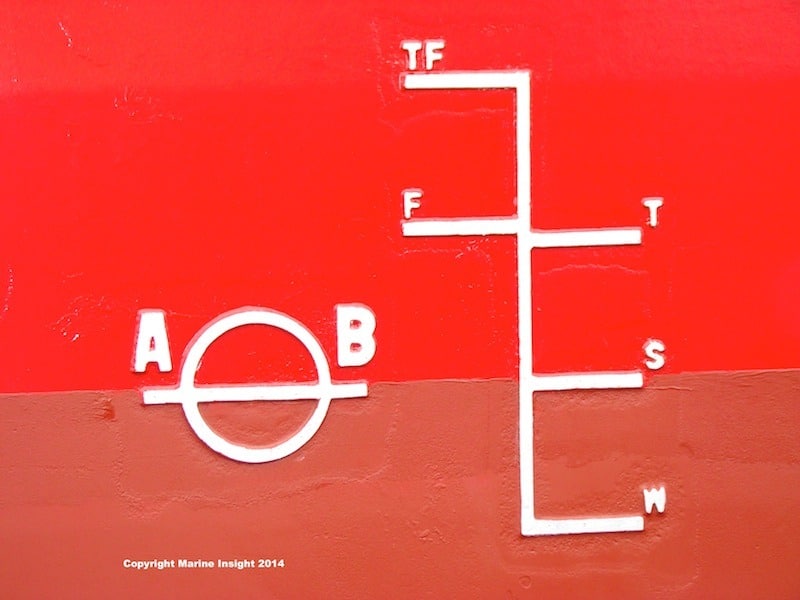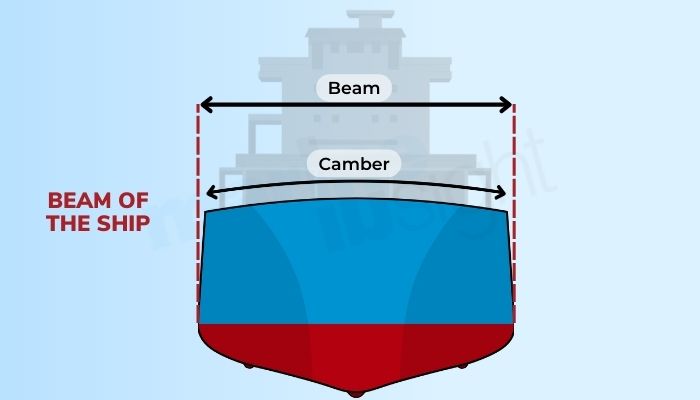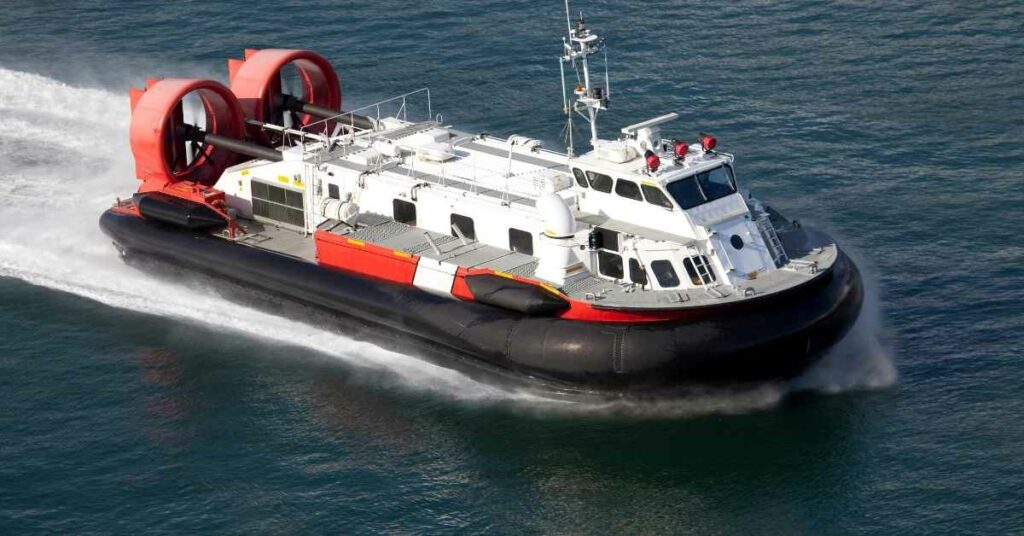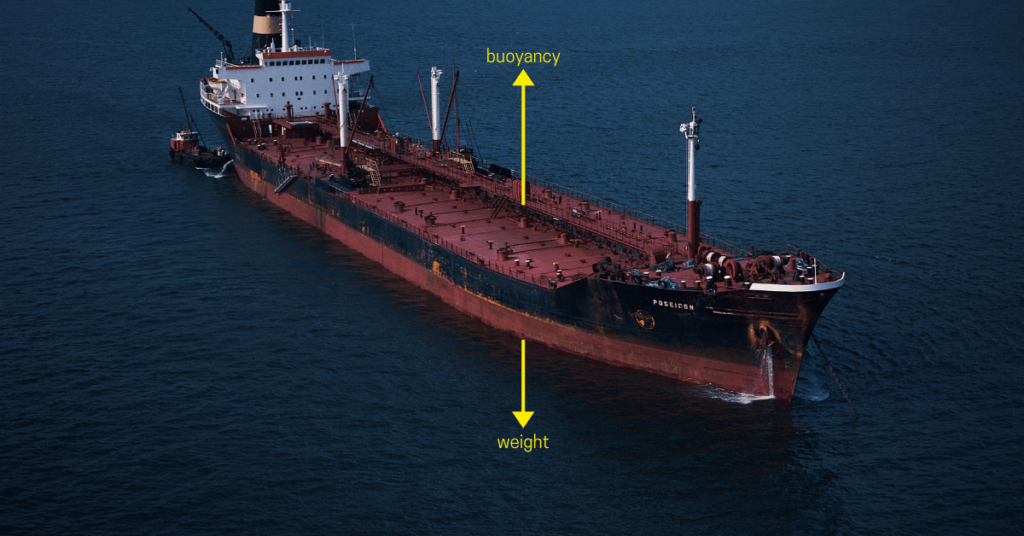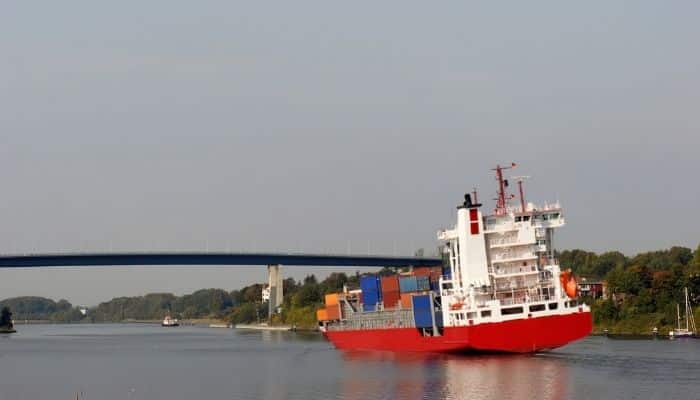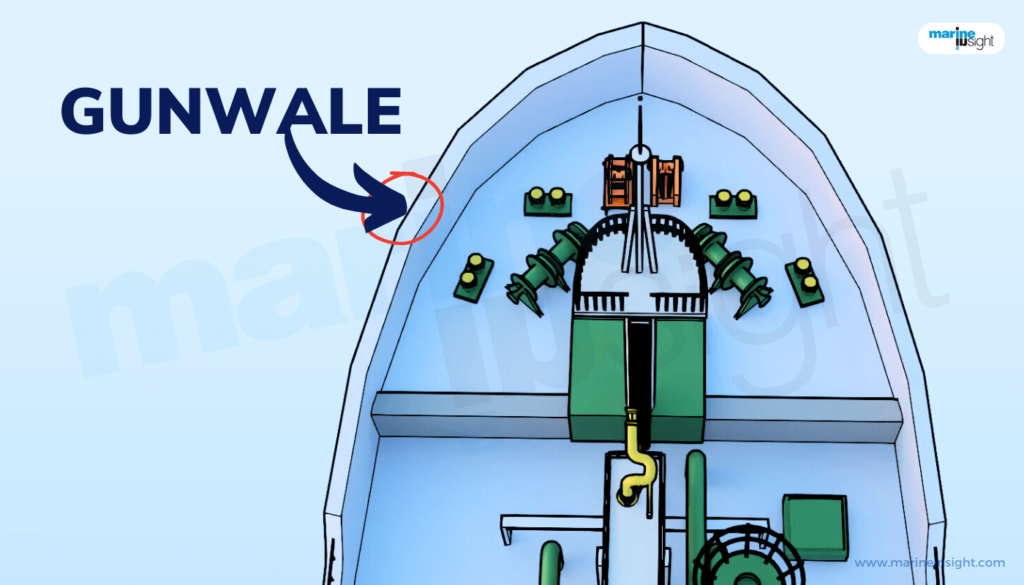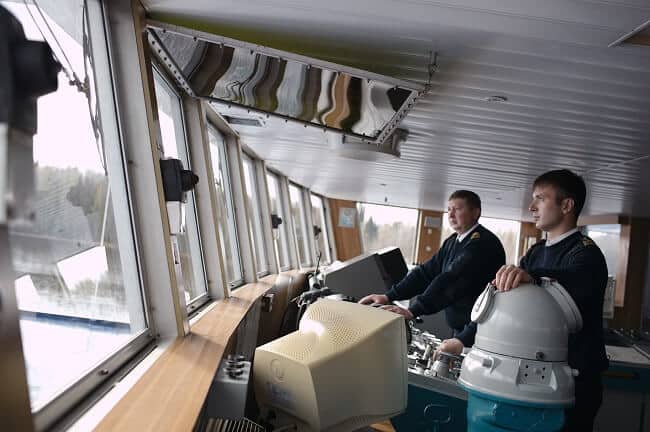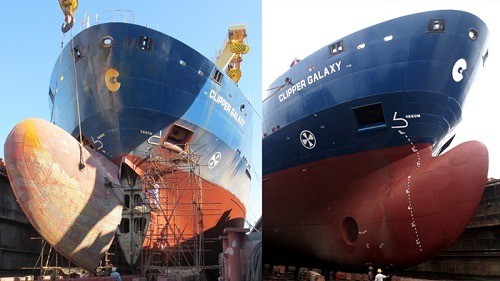Understanding The Beam Of A Ship
A ship structure is always defined in terms of its basic dimensional parameters such as length, breadth, depth, and draft. Many people unfamiliar with technical maritime terms also understand these simple terms. However, delving deeper, these terms have somewhat clear implications and classifications that many people need to become more familiar with.
For instance, length can be further segregated as Length Overall (LOA), Length Between Perpendiculars (LBP), and Length of Waterline (LWL). All these have a slight degree of difference amongst them and require a minimum knowledge of the marine field to understand them.
Similarly, the draft or the draught of the vessel, which is nothing but the vertical distance of the waterline from the vessel’s baseline, is classified as summer draft, winter draft, freshwater draft, and so on.
Accordingly, all seagoing vessels have markings on the side shell of the hull, which are called Load Lines/Draft Lines/ Plimsoll Lines and are designated as Summer Load Line, Winter Load Line, North Atlantic, Fresh Water, and so on based on the extent of the expected corresponding waterlines at different drafts.
Likewise, depth is the vertical height of the main deck or the strength deck of the hull structure to the bottom of the keel plate or the baseline.
What is a beam?
Now, when we talk about breadth, what is the first thing that comes to mind when we speak about breadth? The breadth of any three-dimensional body is the span or the lateral width associated with it. Now, in a simple sense, this is a very perspective term. Consider a three-dimensional box or a cube. While height can easily be distinguished as the vertical elevation above the plane it is kept, length and breadth can be contentious to define.
This is because, for equal or similar dimensions on the same plane, length and breadth or width can be interchangeably used. So, for a box with dimensions, say, 100 cm X 100 cm X 50 cm, where the height is 50 cm, either of the 100 cm spans can be called width or length. Similarly, if the difference between the dimensions is significantly less, say 100 cm and 120 cm, either of them can be called width or length.
However, when there is a significant difference between the coplanar dimensions, say one distance being 500 cm and another being 50 cm, then the distinction becomes clearer. Thus, the span with 500 cm becomes length, and the one with 50 cm becomes width or breadth.
As for ships, the length and breadth can be differentiated even for a person completely alien to this field and seeing the vessel for the first time. Length is the visible span of the vessel from fore to aft when viewed from sideways, whereas breadth is the width of the vessel sideways when viewed in the transverse direction, either looking from forward or from aft.
Now, whenever a designer or a builder defines a vessel, the breadth value, along with other dimensions, is the maximum width of a vessel. As we know, for most ships, the breadth varies along its length, the least in the forward and aft and the greatest near the midship region, the part which is also called the parallel middle body in naval architecture terms.
However, for some rare cases like patrol tugs, some research vessels or icebreakers, and some designs of military ships, the maximum breadth is skewed forward of the midship region and gradually decreases when we go aftwards. So, in those cases, the defined width is the maximum width forward of midships.
This maximum extent of the breadth is more technically defined as the beam of a ship. So, when we talk of a vessel in general, it is more convenient to say beam instead of maximum breadth. Now, like length, the beam of a vessel can also be defined variably. The maximum beam is the breadth measured between the two extreme points of a transverse section.
For all practical purposes, this is taken as the lateral separation or the transverse distance between the two edges of the exposed or strength deck amidships. However, for older vessels, which sometimes had a tumblehome, where the width at the main deck level was lower than the width below, the maximum beam was not taken at the main deck.
So, as a general rule, the maximum distance between the two side shell plating on the hull or the outer extremities of the ship when viewed in a transverse direction is taken as the Maximum Beam. The value of the beam used for defining a vessel at any point of design or construction is taken as this maximum beam for all practical purposes.
The beam at Waterline or BWL is similar to the Length at Waterline or LWL. BWL is the maximum breadth or width of the hull measured at the given waterline. For all practical purposes, BWL is lesser than Maximum Beam but sometimes can be similar as well. Taking a straightforward example, a barge where the hull form is more or less uniform, whether along the length or in the transverse direction, the maximum beam is equal to the BWL.
Another term known as Beam On Centreline or BOC is usually used for multihull vessels. So, for a catamaran or twin-hull design, the BOC is measured as the transverse distance between the two hulls from their respective centrelines at the exposed or strength deck level. Similarly, for a trimaran, the BOC is measured as the distance between the two outermost hulls estimated at their respective centrelines at the main deck level.
Now, all parameters of beam and depth have something called moulded and extreme measures. Moulded measures exclude the thickness of the shell plating, whereas extreme measures also consider the thicknesses or scantlings. So, the moulded beam or breadth is the measured width of the hull section from the inside of the side shell plating at one end to the inside of the plating at another at the broadest point or region. Similarly, the extreme beam also considers the side shell plating thicknesses. For a majority of design purposes, the extreme breadth is taken into consideration.
One important thing to note at this point is that beam or breadth is entirely different from girth, which is often confused with. Beam or breadth, as we discussed, is the linear distance measured from one side to another in a lateral direction. Girth, on the other hand, at a particular section, is the circumferential measure of a given section from one end to another. So, for a transverse hull section, girth is measured as the overall length or extent measured from one deck edge to another, taking into account the geometry of the section.
So, in very simple terms, for the given section, if you consider the outline of the hull to be straightened out like a thread and projected linearly as a straight line, the measured length or span gives you the girth. Girth is directly proportional to width and vice-versa. Another very easy way of understanding girth is by imagining a necklace.
The measured width gives you the distance from one chain to another. However, if you open your necklace, place it straight on a table and measure the distance from one end to another that gives you the length or, in this case, the girth.
Beams In Vessel Design
A vessel’s beam is fundamental at every stage of design and construction. However, the ratio of Length to Beam or L: B is more commonly used for defining a vessel design or hull form. Slender or finer-form ships like fast passenger ferries, military warships like frigates and corvettes, and so on have a high L: B ratio; their maximum breadth or beam is lower than the length. They usually have higher speed characteristics.
Fuller-form vessels like tankers, bulk carriers, and so on have a comparatively lower L: B ratio as they have a wide beam. They are usually slower ships. Containerships can be considered midway between slender and fuller-form ships as they have to optimise both the speed and the internal hull volumes for maximum cargo stowage.
A beam of a vessel is also a direct measure of the transverse stability of a vessel. The greater the beam, the higher the transverse stability due to its wider waterplane. However, for wider beams, on the flip side, once after capsizing or deck flooding, it is a bigger problem as much more energy is required to bring the vessel back to its upright position from the context of statical stability.
A greater beam vessel also means greater deck area and possibilities for internal tank spaces. A vessel’s beam becomes a crucial factor when sailing through channels and canals as often restricted spaces or maritime traffic becomes an issue for broader beam ships.
You might also like to read-
- Understanding Frames in Ships
- Understanding Offshore Lifting Operations And Engineering Analysis
- Superstructure Of Ships: Bending Stress Distribution & Local Stresses
- Loads Acting On Fore And Aft Regions Of Ships – Strengthening Against Dynamic Loading
Disclaimer: The authors’ views expressed in this article do not necessarily reflect the views of Marine Insight. Data and charts, if used, in the article have been sourced from available information and have not been authenticated by any statutory authority. The author and Marine Insight do not claim it to be accurate nor accept any responsibility for the same. The views constitute only the opinions and do not constitute any guidelines or recommendations on any course of action to be followed by the reader.
The article or images cannot be reproduced, copied, shared, or used in any form without the permission of the author and Marine Insight.
Do you have info to share with us ? Suggest a correction
Latest Naval Arch Articles You Would Like:
Subscribe To Our Newsletters
By subscribing, you agree to our Privacy Policy and may receive occasional deal communications; you can unsubscribe anytime.
Web Stories

About Author
Subhodeep is a Naval Architecture and Ocean Engineering graduate. Interested in the intricacies of marine structures and goal-based design aspects, he is dedicated to sharing and propagation of common technical knowledge within this sector, which, at this very moment, requires a turnabout to flourish back to its old glory.



